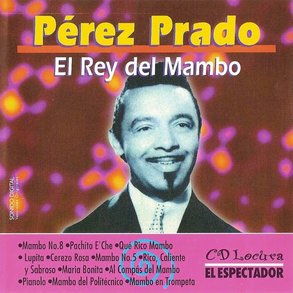 ...A Look at The Origins of Mambo. Mambo is one of the greatest Latin music rhythms ever created. Originally from Cuba, this genre was also responsible for shaping the sounds of modern Salsa music. The following is a brief introduction to the history of Mambo. Danzon and The Roots of Mambo Back in the 1930s, Cuban music was heavily influenced by Danzon. This music style, which appeared in the late 19th century, bore lots of similarities to the original and melodic Cuban Danza. One of the popular bands at that time was the orchestra of Arcaño y sus Maravillas. The band played lots of Danzon but some of its members introduced variations to the classic beat of Danzon. The members were the brothers Orestes Lopez and Israel "Cachao" Lopez. In 1938, they produced a Danzon single entitled Mambo. The Lopez brothers incorporated a heavier African beat into their music. This new type of Danzon, which is at the base of Mambo music, was known at that time as Danzon de Nuevo Ritmo. Sometimes, it was simply called Danzon Mambo. Perez Prado and The Birth of Mambo Although the Lopez brothers set the basics of Mambo, they really did not move forward with their innovation. In fact, it took a couple of decades for the new style to be able to transform itself into Mambo. The popularity of Jazz music and the big band phenomenon of the 1940s and 1950s played a major role in the development of Mambo. Damaso Perez Prado, a talented pianist from Cuba, was the one who was able to consolidate the definitive arrangements that pushed Mambo music into a worldwide phenomenon. Perez Prado moved to Mexico in 1948 and built his career in that country. In 1949, he produced two of his most famous pieces: "Que Rico Mambo," and "Mambo No. 5." It was with these two singles that the mambo fever hit the 1950s. Around that time, the famous Cuban artist Beny More joined the Perez Prado band in Mexico recording enduring tracks like "Bonito y Sabroso." Tito Puente and The Mambo After Perez Prado By the mid 1950s, Perez Prado was already a huge point of reference for Latin music all over the world. However, at that time Perez Prado was criticized for producing music that was moving away from the original sounds of Mambo. Because of this, that decade saw the birth of a new wave of artists willing to preserve the original sounds of Mambo. Artists such as Tito Rodriguez and Tito Puente consolidated the original Mambo sound that Perez Prado had previously created. During the 1960s, Tito Puente became the new king of Mambo. However, that decade was defining a new kind of music of which Mambo was just one of the ingredients. The new sounds that were coming from New York were creating something much bigger: Salsa music. The Legacy of Mambo
The 1950s and 1960s saw the golden years of Mambo. Nevertheless, those golden years were rapidly overcome by the development of Salsa, a new crossover experiment that borrowed elements from different Afro-Latin rhythms like Son, Charanga, and, of course, Mambo. The deal at that time was not about improving Mambo but rather using it to better develop Salsa. All things considered, Salsa is probably Mambo's most enduring contribution to Latin music. The influence of Mambo in Salsa is a significant one. For Salsa, the idea of having a full orchestra comes from Mambo. Besides Salsa, Mambo also played a significant role in the development of another popular Cuban invention: Cha Cha Cha. Although Salsa finished with the golden years of Mambo, this genre is still quite alive in ballroom dance competitions all over the world. Thanks to Mambo, Latin music gained lots of exposure around the world during the 1950's and 1960s. Thanks to Mambo, Salsa and Cha Cha Cha were born. For everything it accomplished, Mambo is definitely one of the most successful creations in Latin music.
0 Comments
Leave a Reply. |
Details
Author...... I would like to share you about certain things that might interest you. Archives...
June 2014
Categories...
All
|
 RSS Feed
RSS Feed
